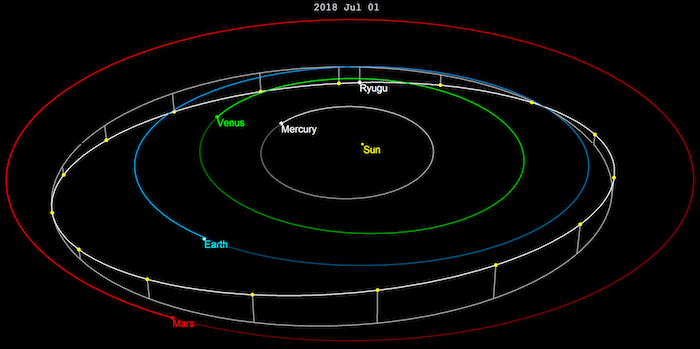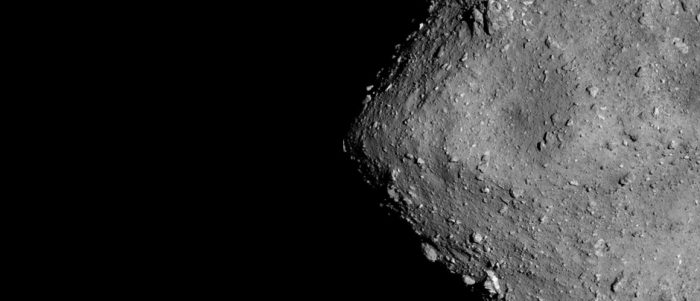For the last year or so, the Japanese Space Agency (JAXA) has had a probe orbiting an asteroid called Ryugu. And now that probe, named Hayabusa-2, is on its way home.
Since arriving at Ryugu, it has collected tons of data, images, readings, measurements and observations. But those things have already been transferred to the scientists at JAXA to study. So why return at all? Because it's also carrying very rare, very precious cargo.
Samples from Ryugu!
Enter the dragon palace
So, question: Why Ryugu?
For one, its age makes it very appealing to astronomers as something to explore. Meaning 'dragon palace' in Japanese, Ryugu has likely remained unchanged for billions of years. Scientists can learn a lot from something like that! But you could say that about nearly all asteroids, most of which are time capsules of the very early days of our solar system. So again, why this asteroid?
Because it's close. It orbits between Mars and Mercury — in fact, its path through space occasionally brings it 4 times closer to Earth than the Moon.

Though Ryugu does cross the path of Earth's orbit, it does this on a different orbital plane. Even though space doesn't have an up or down, you could think of it as passing underneath our planet's orbit. (Wikimedia Commons)
Being so close cuts down on travel time, which means quicker results. And sure enough, Hayabusa-2 is expected back with the samples by late 2020. And how did it get those samples in the first place?
Meet the Falcon!

An artist's impression of the probe. (Go Miyazaki/Wikimedia Commons)
Hayabusa means 'falcon' in Japanese, a bird with exception eyesight and hunting ability. Good thing, too, because Ryugu measures barely a kilometre in width. That's like trying to find a small village in the middle of endless space! Sounds next to impossible. But never say impossible to a space program!
Sure enough, JAXA not only guided Hayabusa-2 successfully to its destination, it also had it land on the asteroid's surface to collect samples. Even more interesting? It collected these samples by essentially hammering into the asteroid, knocking loose particles just below the surface that hadn't been exposed in millions, even billions of years! Watch it all unfold in the video below!
Fly-by drop-off
When Hayabusa-2 does reach Earth next year, we'll all be excited to learn what its cargo can teach us about our solar system's birth. But the probe won't be staying. It will be dropping off the samples by ejecting them into a capsule to be collected somewhere in the Australian desert. And then Hayabusa-2 will continue to explore, perhaps moving on to another asteroid where it can learn even more about our space neighbourhood. Fly Falcon, fly!
 This is a shot of the asteroid Ryugu as taken by the Japanese probe, Hayabusa-2 in 2018. (JAXA_
This is a shot of the asteroid Ryugu as taken by the Japanese probe, Hayabusa-2 in 2018. (JAXA_









